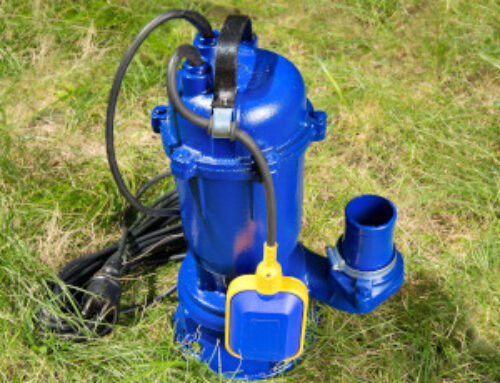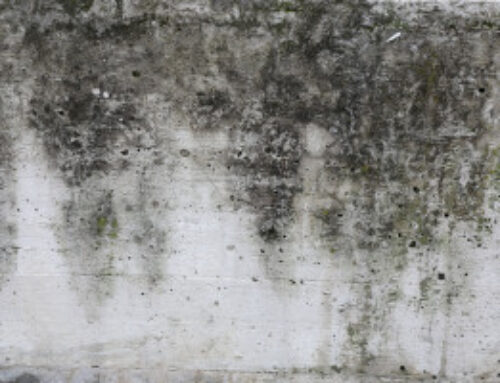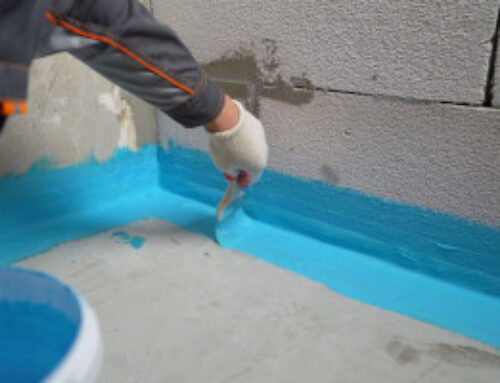When water seeps into your basement, you face a major choice: seal every wall against moisture or tackle only the spots where leaks appear?
Your decision matters because it affects how much you’ll pay now and how safe your home is down the line. Waterproofing your entire basement offers complete protection from moisture, but targeted repairs cost less by focusing only on trouble spots.
Do you need to waterproof the entire basement or just repair the damage? This guide will answer that question so you can get it right the first time.
Basement Water Problems: Why You Don’t Want to Wait to Address Them
When water starts creeping into your basement and you delay repairs, you’re setting yourself up for headaches down the road. You might experience the following:
- Your foundation cracks and shifts when moisture goes unchecked
- Mold grows and releases spores that trigger asthma or allergies
- Your belongings, finishes, and equipment can stain, rot, or corrode
- Your home’s resale value is reduced
If you’re still wondering, “Do you need to waterproof the entire basement or just repair the damage?” remember that taking action now can spare you costly repairs and preserve your investment.
4 Warning Signs of Basement Water Damage
Here are early indicators of water damage that you need to pay attention to:
1. Damp Walls
Watch for walls that feel damp or look discolored. You might see tiny beads of water on concrete or notice dark, wet patches when you run your hand along the surface.
That moisture appears when groundwater seeps through porous foundation walls or when humid air meets a cold surface and condenses. Catching this early means you can stop a small leak before it turns into a major problem.
2. Musty Smells
If you can’t scrub, ventilate, or dehumidify away a persistent, earthy odor, moisture has likely set in behind your walls or under flooring, and mold has begun to grow. That musty smell serves as an early warning, even when you see no visible stains or damp spots.
3. Cracks
Keep an eye on foundation cracks. While hairline cracks are often harmless, any cracks larger than one-sixteenth of an inch across might mean you need to call in a professional.
Also, horizontal cracks might need extra attention. Soil pressure pushing inward often causes these, and they can create a clear path for groundwater to seep through.
4. Mold Growth
Visible mold means moisture has lingered long enough to feed fungal growth. Mold not only stains surfaces but can also trigger respiratory irritation and allergic reactions. Simply wiping it away won’t help — unless you eliminate the underlying leak, spores will likely return.
Finding the Reason Water Is Entering Your Basement
If you are asking, “Do you need to waterproof the entire basement or just repair the damage?” you first need to figure out exactly where the water is sneaking in.
Often, water comes inside because of poor drainage around your home’s foundation. When rain or melting snow pools instead of running off, it builds up around the basement walls and eventually seeps inside. Gutters clogged with leaves or improper land grading frequently make things worse.
Another culprit is hydrostatic pressure. That’s when groundwater saturates the soil around your foundation and pushes forcefully against your basement walls and floors. Over time, this constant pressure opens cracks or forces water through tiny gaps that might have seemed harmless before.
Finally, your basement may simply have inadequate waterproofing. Older houses often lack sufficient protection altogether, while in other homes, once-effective waterproofing may have worn out over time, leaving your basement vulnerable.
Do you need to waterproof the entire basement or just repair the damage? Take a look at each option below.
When Is Spot Repair the Right Choice?
Sometimes you don’t need to seal every inch of your basement — just fix the spots where water sneaks in. Spot repairs work best when leaks spring from a single, visible source. If you spot one crack in your foundation wall, sealing it with hydraulic cement or injecting epoxy or polyurethane can stop that drip at its source.
Also, if you’ve noticed water problems right after a remodel or renovation work, you’re probably dealing with a specific construction defect, not a failing drainage system. Fixing that flawed joint or patching the misplaced seal often ends the problem before it spreads.
Minor, infrequent water issues, such as slight dampness during unusually heavy rainfall, might also be adequately addressed through spot repairs. If the problem occurs rarely and causes minimal damage, you can seal the specific entry points to manage seepage.
You need to consider your finances as well. If your leak truly is isolated, patching it can save you some money. Just make sure that choosing the less expensive option won’t result in more costly repairs later if the problem persists or worsens.
When Would More Robust Basement Waterproofing Be Necessary?
If you’ve patched leaks more than once but water still finds its way inside, you may need a full waterproofing system that tackles moisture both outside and within.
By installing exterior drainage and interior sealants, you can build a layered defense that guards against water intrusion.
Also, older homes pose their own challenges and can often benefit from complete waterproofing systems.
Many lack modern barriers, so tiny cracks can multiply over time. Instead of chasing each new drip, consider comprehensive waterproofing that protects the entire foundation.
You might also want to consider waterproofing if you live in an area with a high water table or clay-heavy soil. In these situations, water typically pressures your foundation from multiple directions, making spot repairs insufficient for long-term protection.
A complete system (things like perimeter drains, exterior coatings, and interior liners) can keep that hydrostatic force from pushing water into your basement.
Finally, if you plan to finish your basement or turn it into a living space, comprehensive waterproofing can become essential. Finishing materials like drywall, flooring, and furniture are highly susceptible to water damage.
A full waterproof barrier can protect your investment, keep mold out, and make the room truly livable.
Working With a Professional to Weigh Your Options
If you’re still stuck wondering, “Do you need to waterproof the entire basement or just repair the damage?” consulting a basement waterproofing contractor can clear up confusion and help you choose the best solution for your home.
When you hire a professional, they inspect your space inside and out, looking for past stains, tracing every crack, and checking your foundation’s age. That detailed review gives them all the facts they need to recommend either a targeted patch or a full waterproof system.
Also, your contractor lays out costs side by side. You’ll see what it costs to seal individual cracks next to the price of installing a comprehensive drainage and pumping system. That clear comparison helps you decide whether you’d rather save up front or lock in long-term peace of mind.
FAQ
Waterproof the Entire Basement or Just Repair the Damage? Our Experts Can Help You Decide
Don’t wait for water to weaken your foundation, invite mold into your home, or ruin your valuables. Talking with basement waterproofing pros gives you a clear picture of what’s happening.
You’ll get professional eyes on your walls, floors, and yard, along with honest advice on whether to fix the leak spots or seal every inch.
When you reach out to Crossroads, you’ll find straightforward answers and not scare tactics. We lay out your options side by side, explain the pros and cons of each, and let you make the final decision. Our crew combines field-tested methods with careful attention to detail so your repairs stand up over time.
Ready to stop water in its tracks? Give us a call today and book your no-pressure evaluation.





